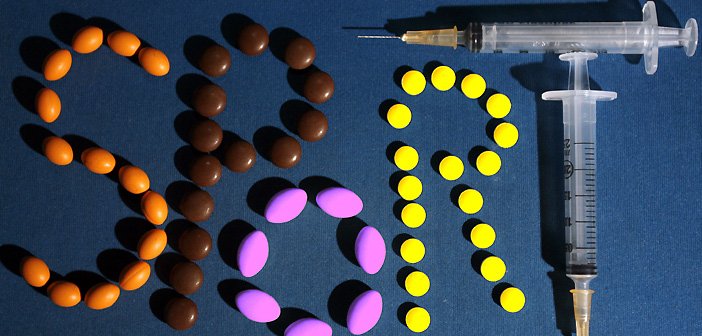How will the future of genetic doping be made, with advances in clinical research and advances in hormones like Myostatin?
Every human being has limits. However, there have been for decades, so-called "doping" means to overcome them in order to rapidly increase physical, intellectual and especially psychomotor performance. Doping is the act of injecting or absorbing pharmaceutical and / or medicinal substances into the body to increase the performance of an individual. This act can be the use of natural processes or the consumption of a particular artificial substance.
Doping is highly prized to face a real or felt obstacle, to increase one's abilities in many areas such as sports, exams, job interviews, public speaking or in difficult professional or social situations. But according to history, what gave rise to doping and how does it work?
What are the effects, actions and consequences of doping in the human body?
What are the different types of doping products these days?
How will the future of gene doping be made, with the advancement of clinical research and advances in hormones such as Myostatin?
A little bit of history
Doping has not been of course yesterday. Since the dawn of time, men have constantly sought to improve their performance with the help of stimulating magic potions or an artisanal recipe to strengthen themselves. It is pharmaceutical and medicinal research currently.
The first concepts of doping have been present since antiquity, more precisely in 3000 years before our dear JC.
The first hominoids intended for direct ingestion mechanically increase the body's capacities. Medicinal stimulants have anti-fatigue properties. Known from civilizations to civilizations, from generation to generation, from the Iliad to the Odyssey plants such as ephedrine or ephedra are the best dopings used. Sage leaves contain tonic properties for the Greeks and the Romans.
At the time, athletes had to draw strength from animals by eating their fresh flesh.
The zenith devours the testicles of powerful animals. In the XNUMXth-XNUMXth century BC, Greek athletes focused on taking stimulants for performance purposes. Thus, the Greeks swallowed various meats according to the conditions of the practice of sport. Goat meat is eaten by jumpers. When it comes to boxers and throwers, bull meat is their ally. And for wrestlers, they eat fatty pork.
At that time, in African and Amerindian countries, drug use was very common to increase their physical and psychic energy as well as the sexual potential of each individual. Coca leaves are chewed by South Americans and Kola nuts by Africans. Kola nut is an effective stimulant against fatigue and stress. The walnut containing stimulating virtues. Its leaves and Iboga roots give the necessary strength to resist fatigue.
The experience with the natives of Gabon has been positive, according to Dr. Albert Schweitzer. As for the coca leaf, it gives the Bolivians and Peruvians of the Andes the main energy to walk all day without eating or sleeping and to facilitate breathing in the desert.
Wild boars and hindmeat were also stimulants very well known by Breton wrestlers of the XNUMXth century, Dutch earthworkers and rugby players.
Doping nowadays
Nowadays, there are different types of doping for the body, muscles and brain.
The doping intended to modify the performances of the body nowadays is varied.
Peptides, narcotics, stimulants, hormones, diuretics or even beta-blockers.
Doping affects different types of sports. Whether women or men, amateur or professional.
To amplify vasio-muscular strength. These are products that force the human body to recreate new tissues and muscles such as Anabolic Steroids, peptides or growth hormone as well as theblood oxygenation via the Po.
The future of doping
According to clinical research, a great improvement is marked in different doping substances. Thanks to the development of newly implemented techniques, top athletes are transformed into genetically efficient athletes.
The techniques of genetic therapy are diverted and exploited today in doping in order to increase the muscular mass of the athletes and its maintenance, by increasing the production of factor IGF-1 for example. In addition, these substances injected into the muscles are more and more undetectable by urinary or blood tests.
Only the removal of a small part of an organ or tissue called a biopsy allows us to guess the presence of synthetic genes. Molecular doping in the form of a molecule also affects specific tissues in the human body.
The future for doping is a bit worrying. Difficult to define, these substances are uncontrollable at the present time.
With the inhibition of Myostatin, for example, we are on the way to seeing supermen on sports grounds and in gyms.
And clinical research continues to evolve. Products like tb500 which allow cell regeneration are a good example.
Many pharmaceutical groups are working to find new products for genetic doping.
Directly transform human genes and cells and their physiological elements. This is the dream of tomorrow.
These genetic doping products will control the physical performance and the mental capacities of whoever uses them. The race for products will never end.
The future of doping reassures future collaborations with the pharmaceutical industry to facilitate the exchange of information and receive confidential information to develop our athletes of tomorrow.





0 Comments
The only thing I'm sure of is that in the future change is inevitable and that we cannot stay with the old doping methods forever. Anti-doping techniques will improve. But doping will have a head start, we tend towards genetic modification or the transplantation of genetically modified organs.
It is on, the new cheating techniques will pass by the genetic modification, of the athlete himself and all that relates around him (food, supplement etc)
The future of doping is bright, it will always be one step ahead of the established rules… ..